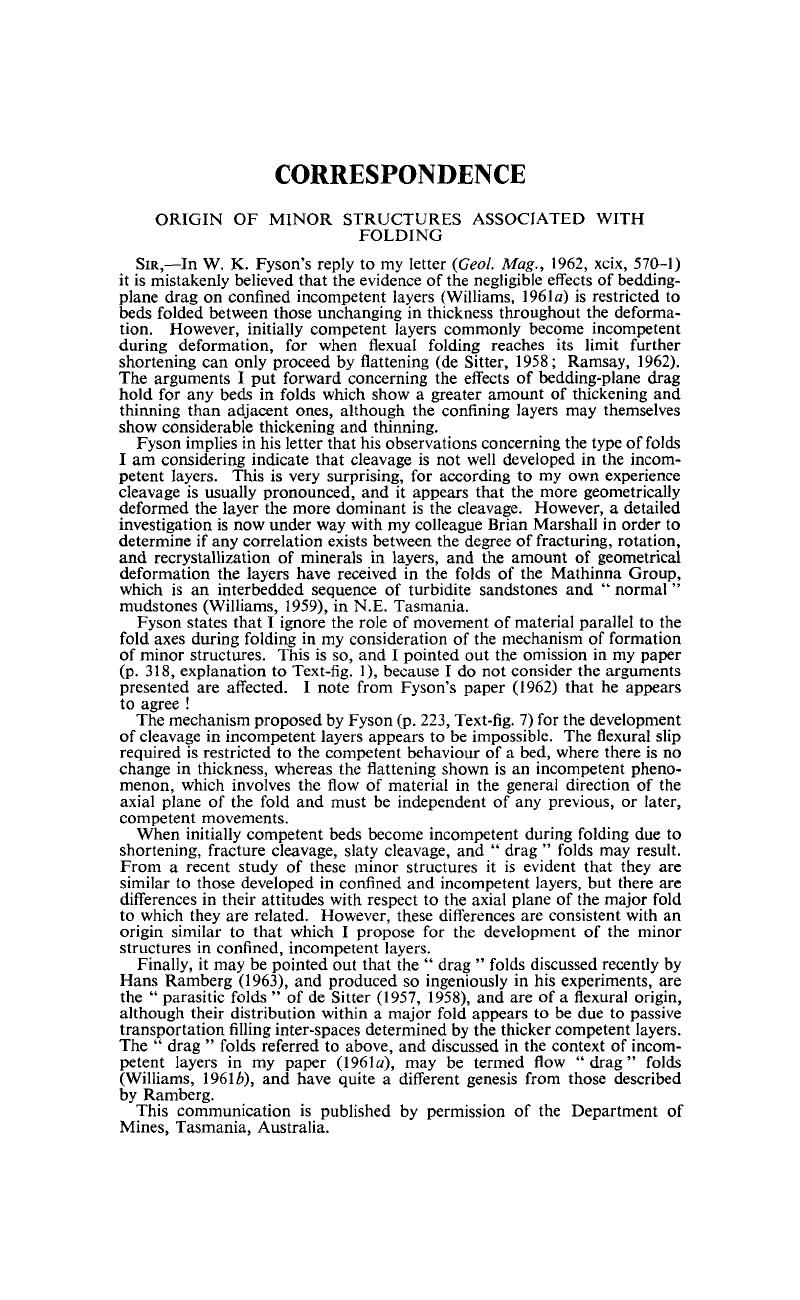No CrossRef data available.
Article contents
Origin of Minor Structures Associated with Folding
Published online by Cambridge University Press: 01 May 2009
Abstract
An abstract is not available for this content so a preview has been provided. As you have access to this content, a full PDF is available via the ‘Save PDF’ action button.

Information
- Type
- Correspondence
- Information
- Copyright
- Copyright © Cambridge University Press 1964
References
REFERENCES
de Sitter, L. U., 1957. Cleavage Folding in Relation to Sedimentary Structure. International Geological Congress, 20th Session, Mexico (1956). Section V, 53–64.Google Scholar
de Sitter, L. U., 1958. Boudins and Parasitic Folds in Relation to Cleavage and Folding. Geol. en Mijnbouw, 20, 277–286.Google Scholar
Fyson, W. K., 1962. Tectonic Structures in the Devonian Rocks near Plymouth, Devon. Geol. Mag., 99, 208–226.CrossRefGoogle Scholar
Ramsay, J. G., 1962. The Geometry and Mechanics of Formation of “Similar” Type Folds. Jour. Geol., 70, 309–327.CrossRefGoogle Scholar
Williams, E., 1959. The Sedimentary Structures of the Upper Scamander Sequence and their Significance. Pap. Proc. Roy. Soc. Tas., 93, 29–32.Google Scholar
Williams, E., 1961 a. The Deformation of Confined, Incompetent Layers in Folding. Geol. Mag., 98, 317–323.CrossRefGoogle Scholar

